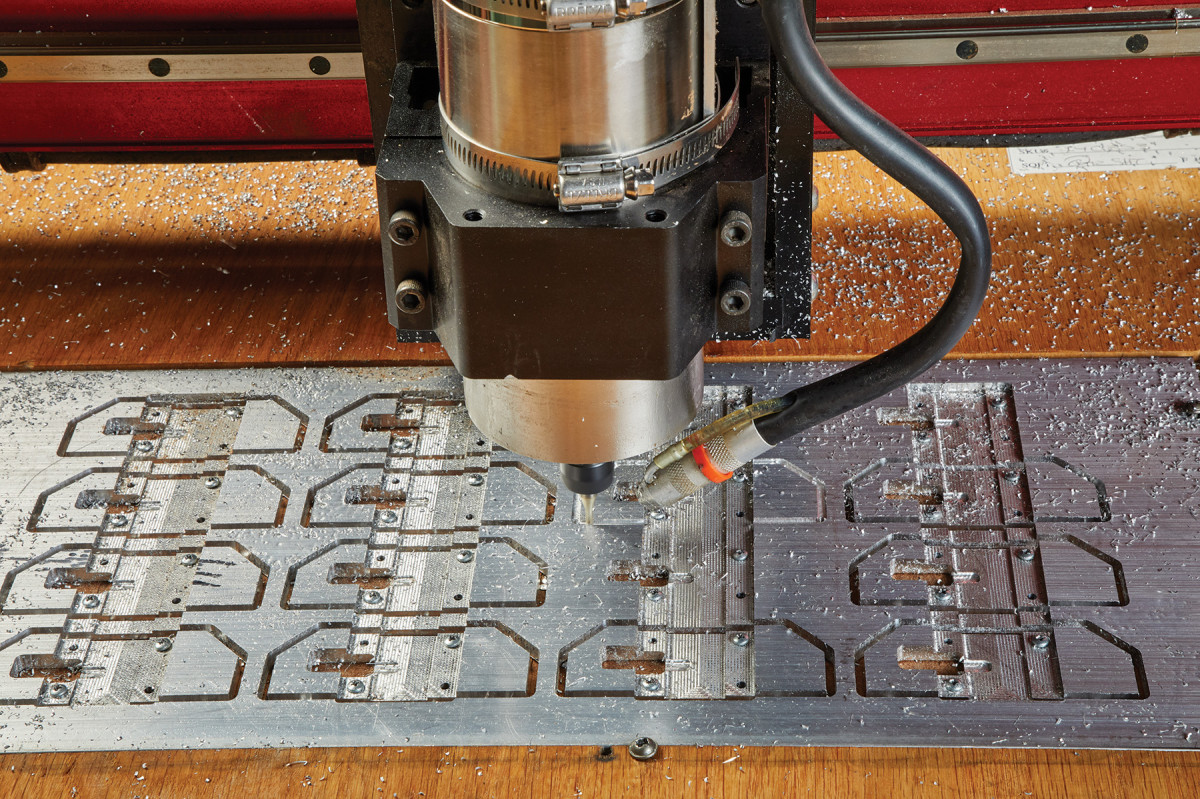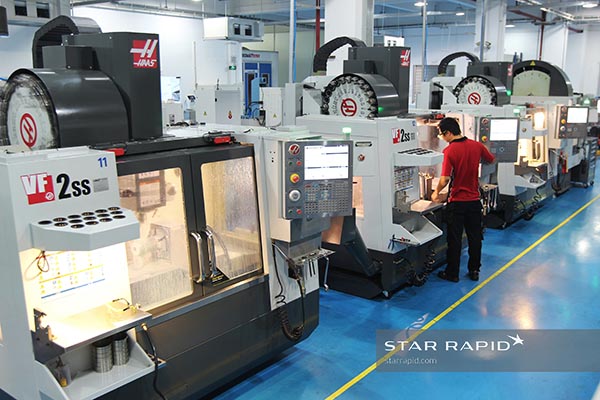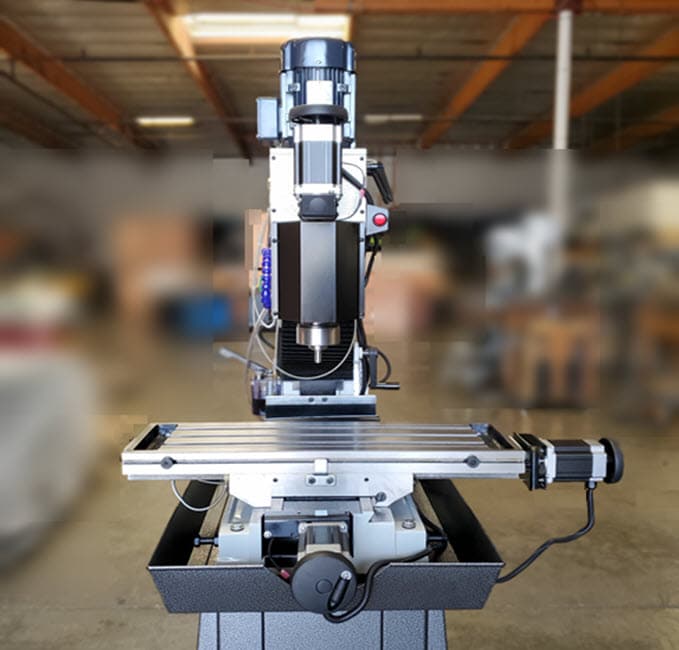Table of Contents
If you’re a machinist or a hobbyist who loves working with metals, you might be familiar with CNC machines and mills. CNC (Computer Numerical Control) machines are used for precision cutting, while mills are used for shaping and cutting metal. But what if you want to combine the two? Can you add a CNC to a mill?
The short answer is yes, you can. In fact, many machinists have successfully added a CNC to their mill to increase precision and efficiency. However, there are some things you need to consider before making the decision to add a CNC to your mill. In this article, we’ll explore the pros and cons of adding a CNC to a mill and what you need to know before taking the plunge.
Yes, you can add a CNC (Computer Numerical Control) to a mill. However, the process can be quite complicated and may require professional assistance. You will need to ensure that your mill is compatible with a CNC, purchase the necessary components, and program the machine to operate with the CNC. It is recommended that you do thorough research and consult with experts before attempting to add a CNC to your mill.
Can I Add a CNC to a Mill?
If you’re a machinist or hobbyist, you’ve probably wondered if it’s possible to add computer numerical control (CNC) capabilities to a manual mill. The short answer is yes, but it’s not as simple as slapping on a few motors and calling it a day. In this article, we’ll explore the steps you need to take to retrofit your mill with CNC capabilities, as well as the benefits and drawbacks of doing so.
What is CNC?
CNC refers to the use of computers to control machine tools. Unlike manual mills, which require the operator to turn handles and levers to move the cutting tool, CNC mills use motors and software to control the movement of the tool. This allows for greater precision and repeatability, as well as the ability to create complex shapes and designs.
Benefits of CNC:
- Increased precision and accuracy
- Greater speed and efficiency
- Ability to create complex shapes and designs
- Reduced operator error
- Improved safety
Drawbacks of CNC:
- Higher initial cost
- Requires technical expertise to operate and maintain
- Less flexibility than a manual mill
- Not suitable for small-scale or one-off projects
What Do You Need to Add CNC to a Mill?
To add CNC capabilities to a manual mill, you’ll need the following:
1. A CNC conversion kit:
A CNC conversion kit includes all the necessary hardware and software to retrofit your mill with CNC capabilities. These kits typically include stepper motors, controllers, power supplies, and software to control the machine.
2. A computer:
You’ll need a computer to run the CNC software, which controls the movement of the mill. The computer should have a fast processor and plenty of memory to handle the demands of CNC software.
3. Knowledge and expertise:
Adding CNC capabilities to a mill requires technical expertise and knowledge of machining and electronics. You’ll need to be comfortable with wiring and programming, as well as have a good understanding of the principles of machining.
4. Time and patience:
Retrofitting a mill with CNC capabilities is a complex and time-consuming process. It requires careful planning, attention to detail, and a lot of patience to get everything working smoothly.
How to Add CNC to a Mill:
The process of adding CNC capabilities to a mill will vary depending on the make and model of your machine, as well as the conversion kit you choose. However, the following steps will give you a general idea of what’s involved:
1. Disassemble the mill:
The first step is to disassemble the mill and remove any parts that will interfere with the installation of the conversion kit. This may include the hand cranks, motor mounts, and other components.
2. Install the motors and controllers:
Next, you’ll need to install the stepper motors and controllers that come with your conversion kit. This will involve mounting the motors to the mill and wiring them to the controllers.
3. Install the software:
Once the hardware is in place, you’ll need to install the software that controls the movement of the mill. This will involve connecting the computer to the controller and configuring the software to work with your specific mill.
4. Test and calibrate:
Finally, you’ll need to test the machine and calibrate it to ensure that it’s working properly. This may involve adjusting the speed and direction of the motors, as well as fine-tuning the software settings.
Conclusion:
Adding CNC capabilities to a manual mill can be a great way to increase precision, speed, and efficiency in your machining projects. However, it’s not a simple process and requires technical expertise, patience, and a significant investment of time and money. Before you decide to retrofit your mill with CNC, be sure to carefully consider the benefits and drawbacks, as well as your own skill level and machining needs.
Frequently Asked Questions
If you’re wondering whether you can add a CNC to a mill, you’re not alone. Here are some of the most commonly asked questions about this topic, along with detailed answers to help you make an informed decision.
Can I add a CNC to a manual mill?
Yes, it is possible to add a CNC to a manual mill. However, there are a few things to consider before doing so. First, you will need to make sure that your mill is compatible with a CNC conversion kit. Some mills may be too old or too small to be converted. Additionally, you will need to have some basic knowledge of electronics and programming in order to install and operate the CNC system.
Once you have determined that your mill can be converted and you have the necessary skills, you can purchase a CNC conversion kit and begin the installation process. The kit will typically include all of the necessary hardware and software, as well as detailed instructions for installation and operation.
How much does it cost to add a CNC to a mill?
The cost of adding a CNC to a mill can vary widely depending on the type of mill, the size of the conversion kit, and the level of customization required. In general, you can expect to spend anywhere from a few hundred to several thousand dollars on a CNC conversion kit.
Other factors that can affect the cost include whether you choose to purchase a pre-built kit or build your own, the complexity of the installation process, and any additional tools or equipment that you may need to purchase. It’s important to do your research and get quotes from multiple suppliers in order to get an accurate idea of how much your specific conversion will cost.
What are the benefits of adding a CNC to a mill?
Adding a CNC to a mill can offer several benefits, including increased precision and accuracy, faster production times, and the ability to automate complex processes. With a CNC system, you can program your mill to perform specific tasks with a high degree of repeatability, which can save you time and reduce the risk of errors or defects in your parts.
Additionally, CNC systems can be used to create complex shapes and designs that would be difficult or impossible to achieve with manual milling methods. This can open up new possibilities for your business or hobby and allow you to take on more challenging projects.
Are there any downsides to adding a CNC to a mill?
While there are many benefits to adding a CNC to a mill, there are also some potential downsides to consider. One of the main drawbacks is the cost, which can be significant depending on your needs and budget. Additionally, the installation process can be time-consuming and may require specialized tools and equipment.
Another potential downside is that CNC systems can be complex and require some technical expertise to operate. If you’re not comfortable with electronics or programming, you may need to invest time and resources into learning these skills in order to get the most out of your CNC system.
Do I need any special training to use a CNC mill?
While it’s not strictly necessary to have formal training in order to use a CNC mill, it can be helpful to have some basic knowledge of programming and electronics. Many CNC systems come with user-friendly software and interfaces that make it relatively easy to program your mill, but you will still need to understand some basic concepts in order to get the most out of your system.
If you’re new to CNC milling, there are many resources available online and in-person that can help you get up to speed. You may also want to consider taking a class or workshop to learn more about CNC milling and get hands-on experience with the technology.
In conclusion, adding a CNC to a mill is definitely possible and can bring many benefits to your machining operations. With the right tools and knowledge, you can retrofit an existing mill or even build your own CNC mill from scratch.
However, it’s important to keep in mind that adding a CNC to a mill can be a complex process that requires careful planning and attention to detail. It’s also important to consider the cost and time involved in the retrofitting process, as well as the ongoing maintenance and upkeep of the CNC mill.
Ultimately, the decision to add a CNC to a mill will depend on your specific needs and goals as a machinist. If you’re looking to increase your production capacity, improve accuracy and precision, and take on more complex machining projects, a CNC mill could be a valuable investment for your business or personal workshop.
Request a quote today!
[contact-form-7 id="1578" title="Contact form"]
Please compress the file into a ZIP or RAR file before uploading. Alternatively, send through your RFQ by email.
enquires@unitymanufacture.com





